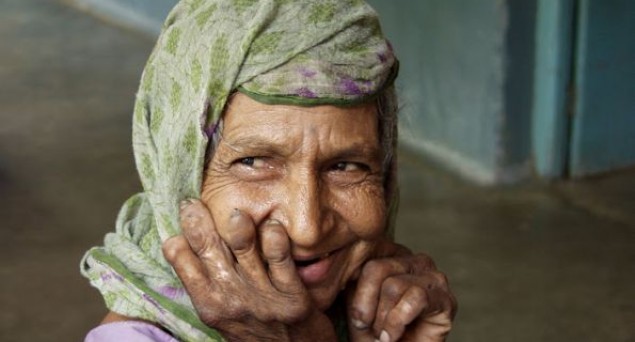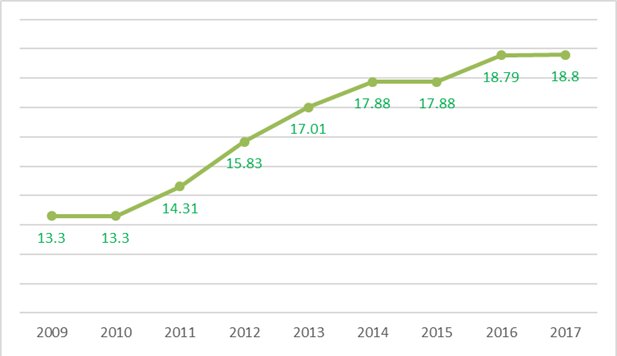A silent emergency; Is Leprosy re-emerging in India?
 Image credits: IndiaTomorrow.net
Image credits: IndiaTomorrow.net
Its been nearly 13 years since India officially eliminated leprosy. India was officially declared ‘leprosy free’ in 2005 by bringing the Prevalence Rate below 1/10000 at the national level. However, official data states that the number of new leprosy cases detected during 2016-17 is 135485. Also, the prevalence rate of leprosy in India per 10000 population as of March 2017 is 0.66. It is established that the number underestimates the real Leprosy burden. The Health Minister himself is on record saying that there may be 2,50,000 new Leprosy cases every year, based on a sample survey by Indian Council of Medical Research (ICMR) conducted in 2008-2011. Interestingly, the results of this pan India survey have not yet been released to the public.
It is improbable that India is going to achieve complete elimination of Leprosy at the state or district levels any time soon. Even the National Health Policy 2017 (NHP), which will guide the health policy direction of the country over the next decade or so, still has the elimination of Leprosy as a national level target. Also, leprosy eradication is still a much-discussed topic.
While India still fights hard to eradicate leprosy in the state and district levels, our country is also known to have had several discriminatory laws against persons affected by Leprosy. One of the oldest laws (The Lepers Act of 1898), which sanctioned the arrest and segregation of persons affected by leprosy into ‘leper asylums’ was repealed only as late as in May 2016, by the current government. Before the national level repealment, even though 12 states and five union territories of India had abandoned its application within their respective jurisdictions, it continued to be in force in the remaining states and union territories. Back in 2000, the leprosy prevalence was brought under one case per 10000 population internationally. This achievement forced endemic countries like India to achieve the same level at least by 2005. The current global prevalence is estimated by the World Health Organisation (WHO) to be 0.23 per 10000 population. In 2017, India along with Brazil and Indonesia were the only countries where more than 10000 new leprosy cases reported per year. For the year 2017, 135485 out of the 204686 new Leprosy cases detected globally were in India – a staggering 66%. In other words, two out of three new global Leprosy cases are detected in India, according to official data.
The forced declaration of leprosy eradication of 2005 had a reduced effect on the fight against the disease by reducing funds available, making sure cases are not registered, and shifting focus and resources to other diseases. After 2005, the number of new Leprosy cases detected in India remained around 1.3 lakhs every year, keeping the national prevalence rate safely well within the elimination target.

An analysis of government data by the Observer Research Foundation has revealed a distinct trend that should worry every health policymaker in the country – Leprosy is soon becoming even more of a disease of most marginalized and underserved populations in far-flung areas. Data shows that prevalence of Leprosy amongst the Adivasis (Scheduled Tribes) who, according to Census 2011, constituted 8.6% of the Indian population is 18.8% – much more than their proportion in the Indian population- and that proportion is fast increasing. From 13.3% in 2009, it has increased to an alarming 18.8%. In the same period, an overall number of new cases has remained almost the same at the national level.
State level reported data paints an even more distressing picture. As discussed earlier, Leprosy is at risk of becoming a disease exclusively of the Adivasis in certain states like Gujarat, where despite constituting 14.8% of the state population, Adivasis bear 64.9% of the total new Leprosy caseload. 21% of Madhya Pradesh’s Adivasis bear 39.4% of the new leprosy caseload in the state. Maharashtra, which has under 10% Adivasis, had 33.7% of all new Leprosy cases reported from the community. West Bengal’s Adivasis report 20.3% of all new Leprosy cases when their proportion in the state population is just 5.8%. Tripura, with 31.8% Adivasis and Dadra and Nagar Haveli with 52% Adivasis report 64.7% and 98.2% new Leprosy cases from among the Adivasi communities, respectively. Government data from districts like Tapi in Gujarat with more than 80% Adivasis show that Incidence of Leprosy has gone up from 9.37 per 10000 population in 2010 to 17.16 per 10000 population in 2014. Clearly, leprosy is still a major health problem for the country. Though there are medicines available and the fact that the strategies to contain it are simple, the question now shifts to the ethical priorities of our national and state health policies and their implementation.
Only inadequate attention is given to this silent emergency hitting the most underserved populations of the country because the emerging spread of the disease is away from the public gaze.
Eight years back, in 2010, there were no districts in India with a leprosy prevalence level of more than 5/10000 population. But according to the data, there were four such districts whose prevalence level crossed 5/10000. This silently gives us an idea of a risk of a re-emergence of Leprosy as a public health problem in substantial areas of the country. According to the latest figures from the government, 128 districts have reported a prevalence rate which is higher than 1/10000 population. As on March 2017, 53 districts in 11 States/UTs reported a prevalence rate higher than 2/10,000 population. These states are Bihar (4 districts), Odisha (8 districts), Chhattisgarh (15 districts), Gujarat (5 districts), Jharkhand (3 districts), Madhya Pradesh (2 districts), Maharashtra (6 districts), West Bengal (6 districts), D&N Haveli (1 districts), Lakshadweep (1 districts) and Delhi (2 districts). It needs to be remembered that in 2010, only 20 districts in seven states had a prevalence rate higher than 2/10,000 population. While disaggregated data is not available, one assumes that these new districts reporting high Leprosy prevalence have substantial Adivasi populations.
Graph and Information credits: https://www.orfonline.org/research/42516-a-silent-emergency/